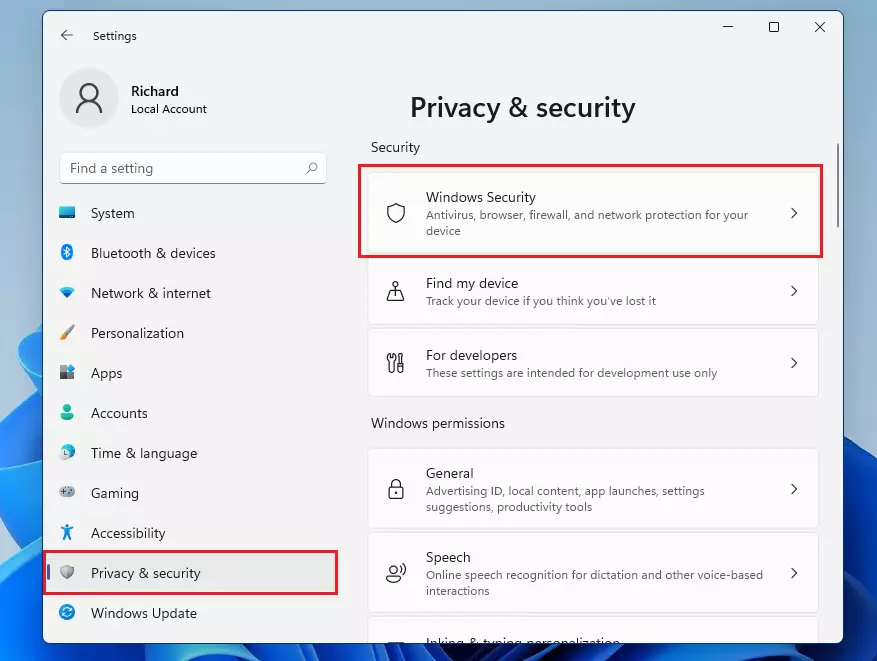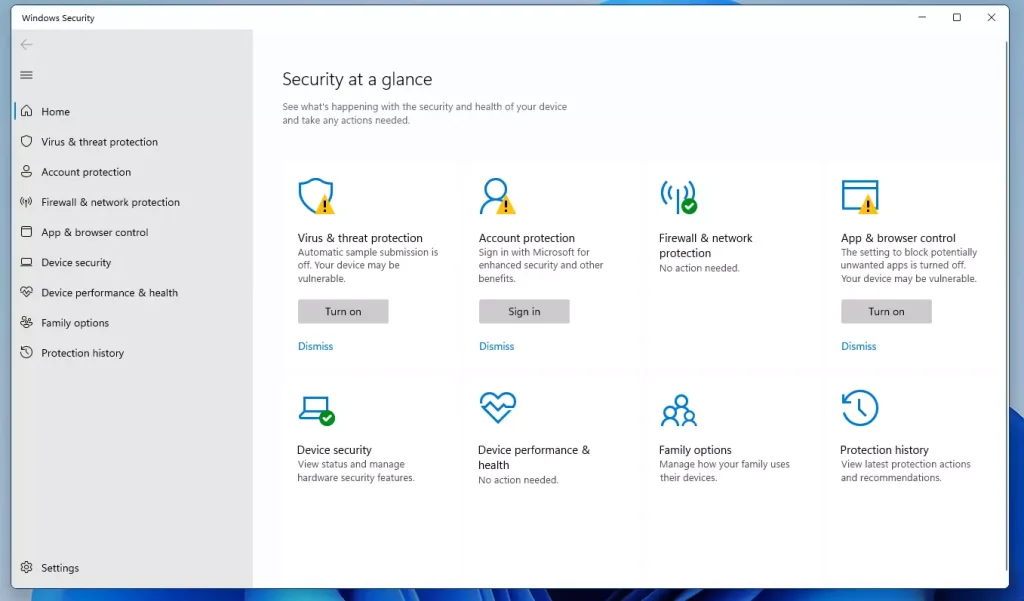This article explains how to protect Windows 11 using Microsoft Security.
Windows Security is an application that manages the tools protecting your computer and data. When you boot up Windows 11, Microsoft Security safeguards your device by scanning for malware, viruses, and security threats in real time.
In addition to real-time scanning, Windows Security automatically downloads the latest antivirus definitions to help you stay protected against new online threats.
If you install a different antivirus program, Microsoft Defender Antivirus will automatically disable and will reactivate when you uninstall the other antivirus application.
Protect Windows 11 computers with Microsoft Defender
Microsoft Defender is an integrated antivirus feature of Microsoft Security, which includes various tools within Windows Security.
Below are alert statuses you should know when using Windows Security.
Login to Windows Security by going to Start ==> Settings, as shown in the image below.

In the Settings app, select Privacy & Security and go to Windows Security, as highlighted below.

That will take you to the Windows Security quick status pane showing protected areas. Click the Windows Security button to view its settings panel that controls and manages different security components.

In the Windows Security panel, you’ll see a security glace of protected areas. If you haven’t configured Windows Security, you may find some areas that need your attention.

These are the meanings of Windows Security status definitions:
- Green – all is good, and no recommended actions are needed.
- Yellow – there are some safety recommendations that you need to attend to.
- Red – you should immediately resolve issues that are security concerns.
A healthy computer should have a dashboard similar to the one below after addressing all security concerns.

Below are the different security areas managed in Windows Security. They are listed below for some details and descriptions:
- Virus & threat protection – This area includes Microsoft Defender, which monitors threats, runs scans, and gets updates to help detect security issues and threats.
- Account protection – This area deals with access, sign-in options, and account settings, including Windows Hello and other options.
- Firewall & network protection – This area focuses on the Windows firewall and monitors what’s going on with the network and internet connections.
- Apps & browser control – This area includes Microsoft Defender SmartScreen, which helps protect against potentially dangerous apps, files, sites, and downloads.
- Device security – This area reviews your device security settings to help protect you from attacks by malicious software.
- Device performance & health – This area looks at info about your device and helps clean and download the latest update to keep your device performing great.
- Family option – This area helps keep kids safe online
So as you can see, Windows Security has many good features for most users. They will not need another commercial antivirus software installed on Windows 11 to stay protected from threats.
How to fix Windows Security apps
Occasionally, the Windows Security app may not function correctly. Since these apps are vital for securing and protecting your device, it’s important to ensure they are operating properly.
If the Windows Security app works as expected, use the post below to help resolve the issues.
The post above will help you resolve Windows Security issues.
How to schedule a scan in Windows 11
Windows Security performs real-time scans of your computer while downloading files and other content from the internet. It also conducts regular scans when your computer is not in active use. If you would like to schedule scans to occur at specific times, the information in the post below can assist you.
Using the information above will help keep your device secure and protected using Windows Security. One important takeaway from this post is that Windows Security is good for you, and you may not need an additional antivirus program.
Conclusion:
- Windows Security offers robust protection against malware, viruses, and security threats built directly into Windows 11.
- Microsoft Defender Antivirus automatically enables real-time scanning and receives updates to stay current with the latest threats.
- Home users don’t need additional commercial antivirus software, as Windows Security provides comprehensive coverage.
- Regular checks on the Windows Security status ensure your device remains in optimal health.
- Familiarizing yourself with the Windows Security features can enhance your overall digital safety and wellbeing.

Leave a Reply to Enable Core Isolation Memory Integrity in Windows 11 - Geek Rewind Cancel reply